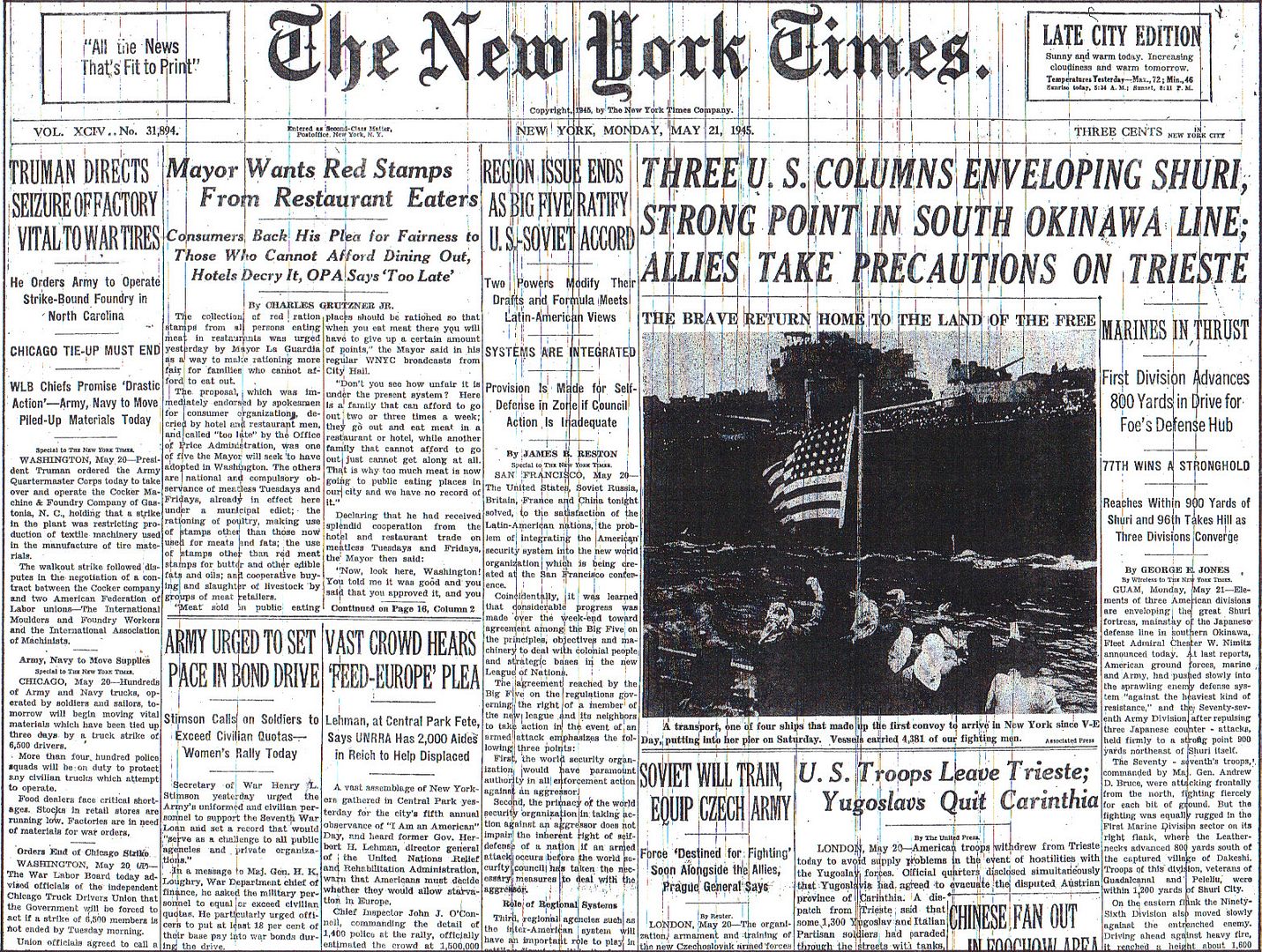
Posted on 05/21/2015 4:15:17 AM PDT by Homer_J_Simpson

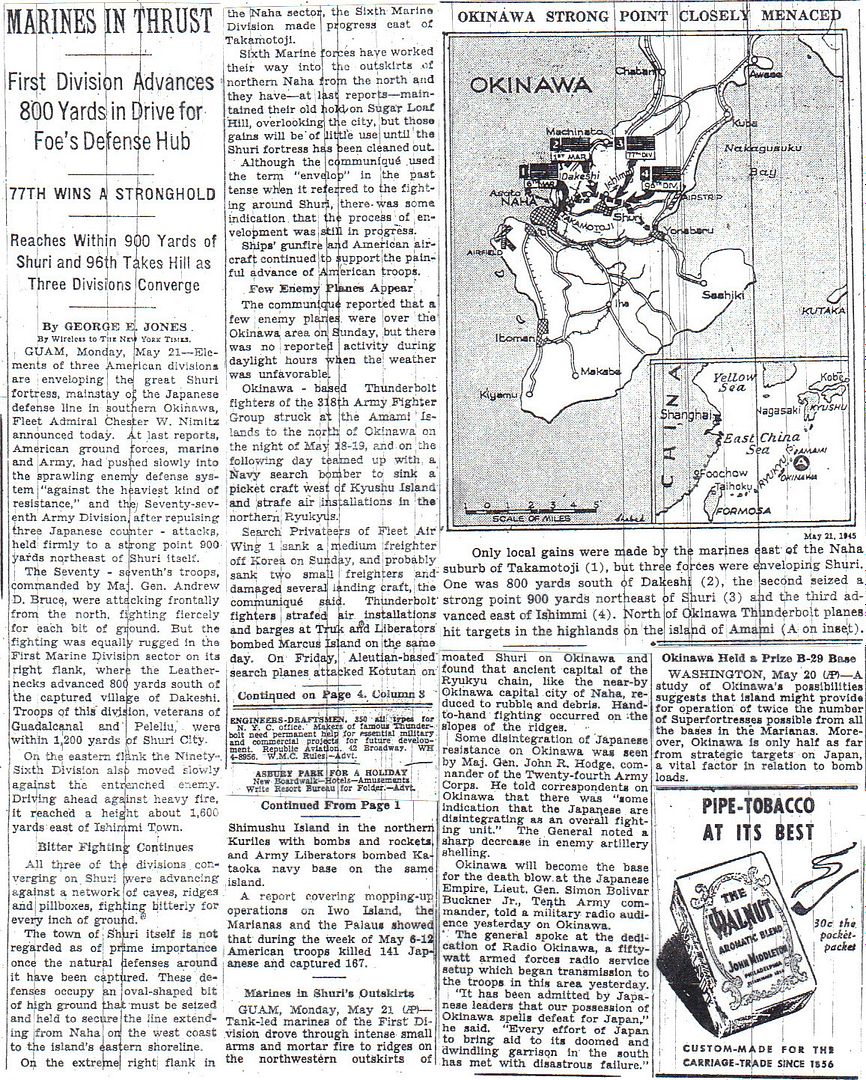
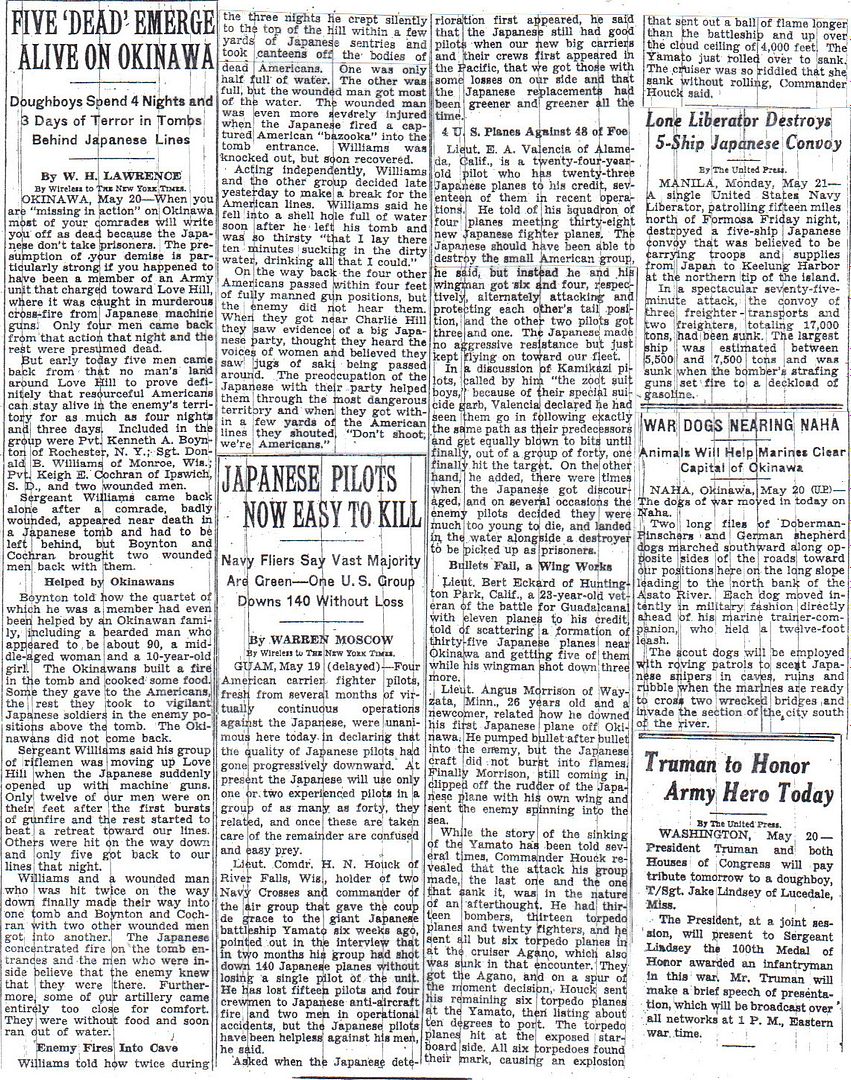
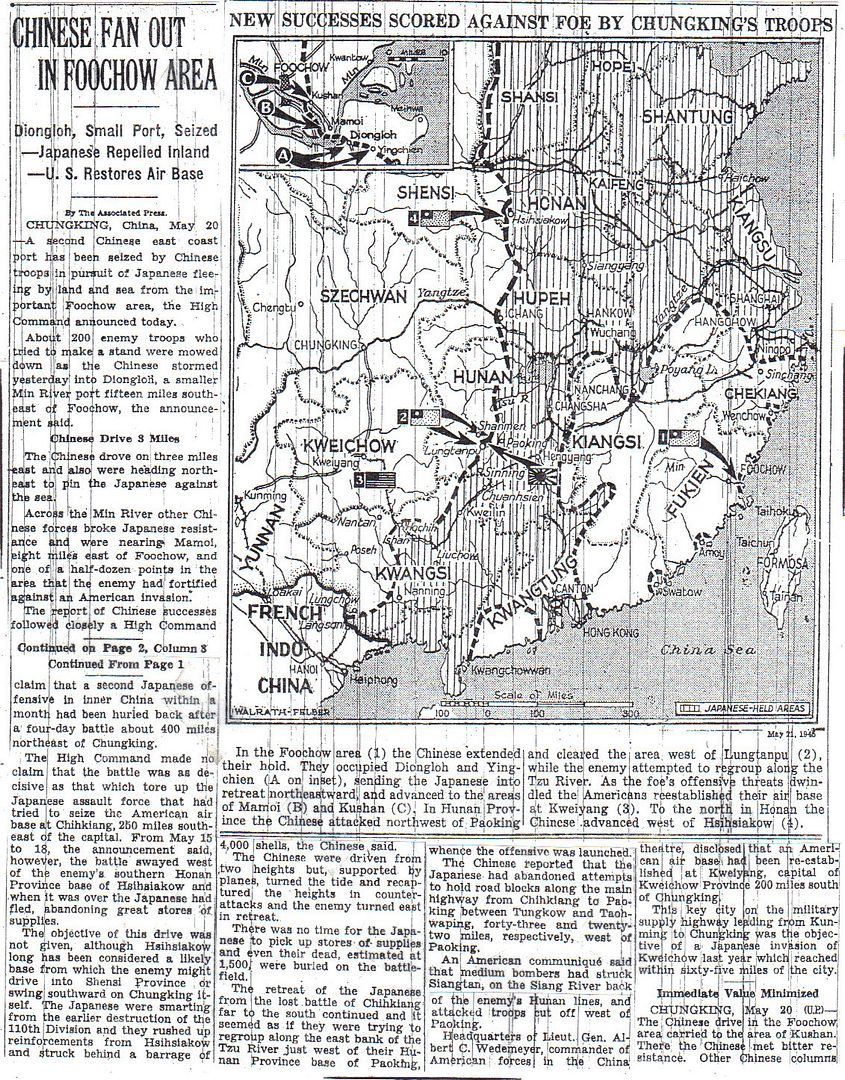
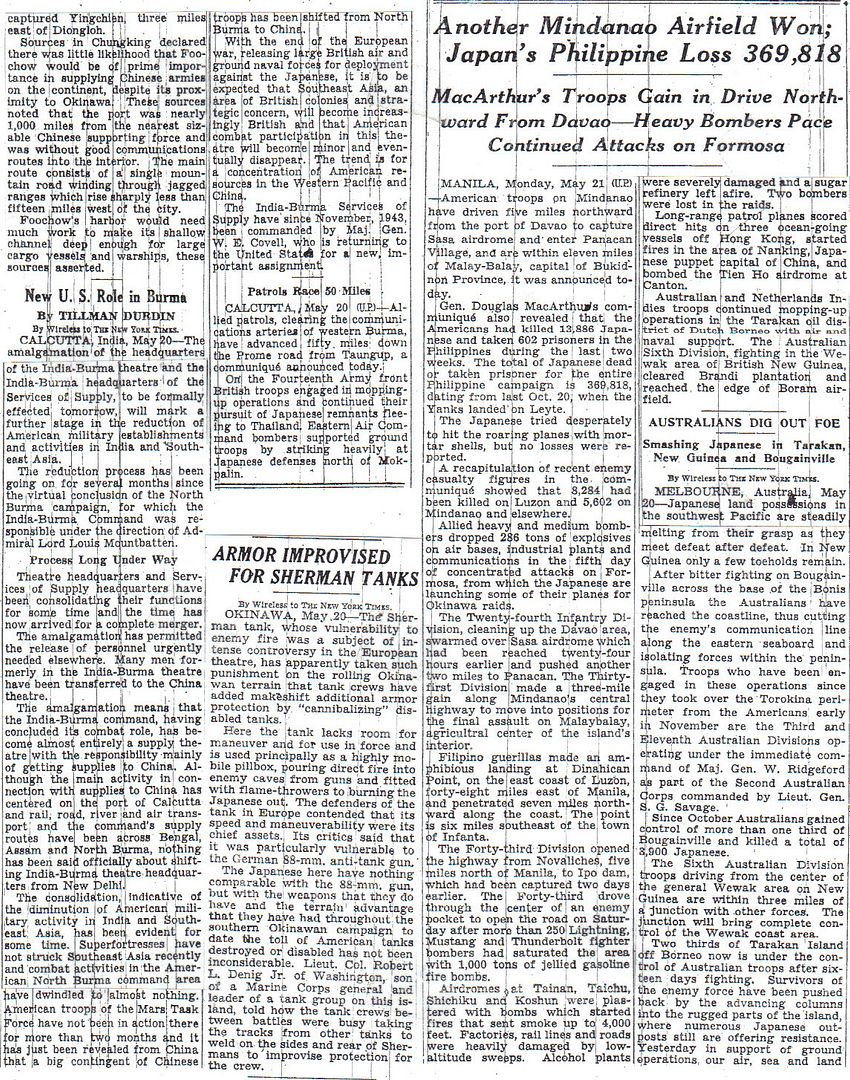
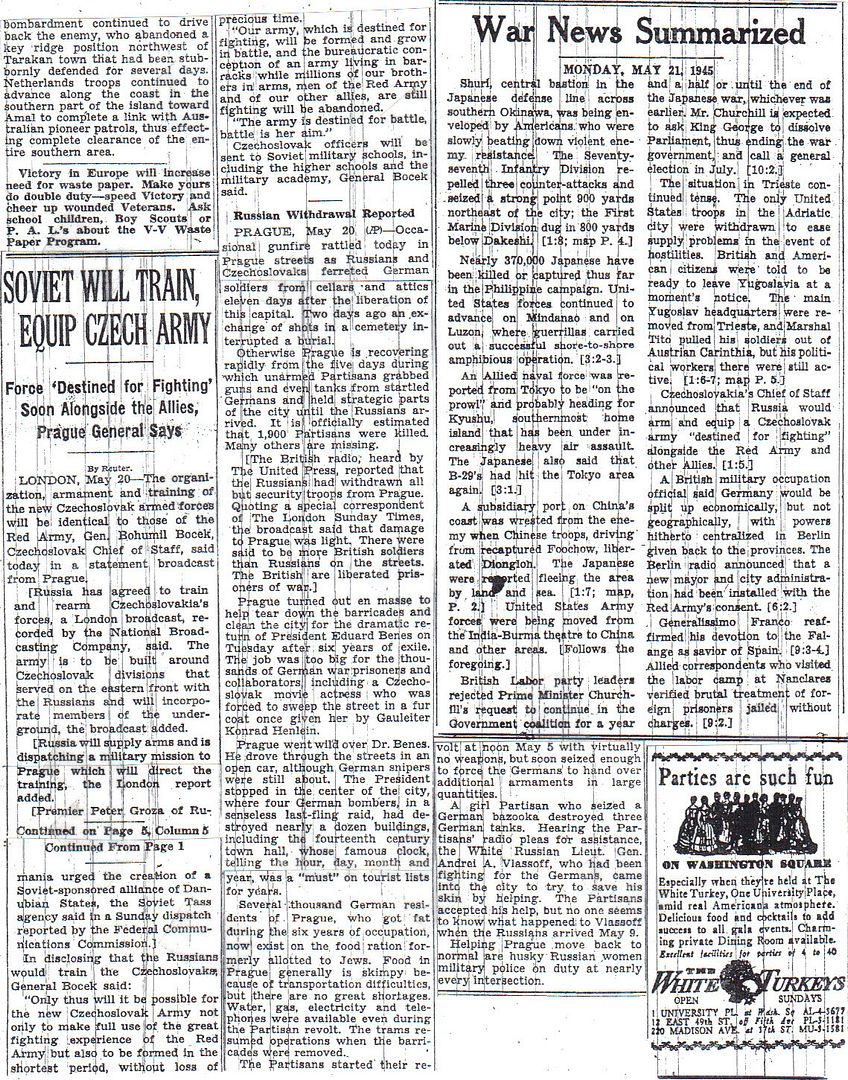

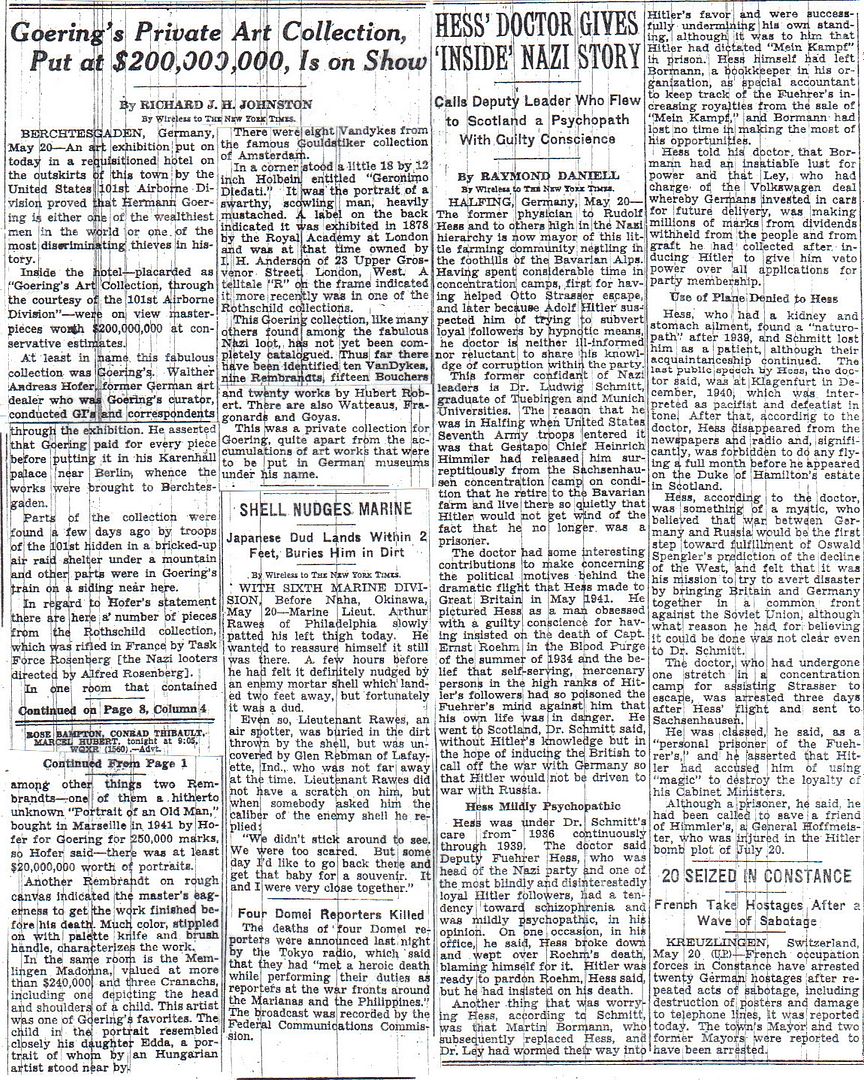
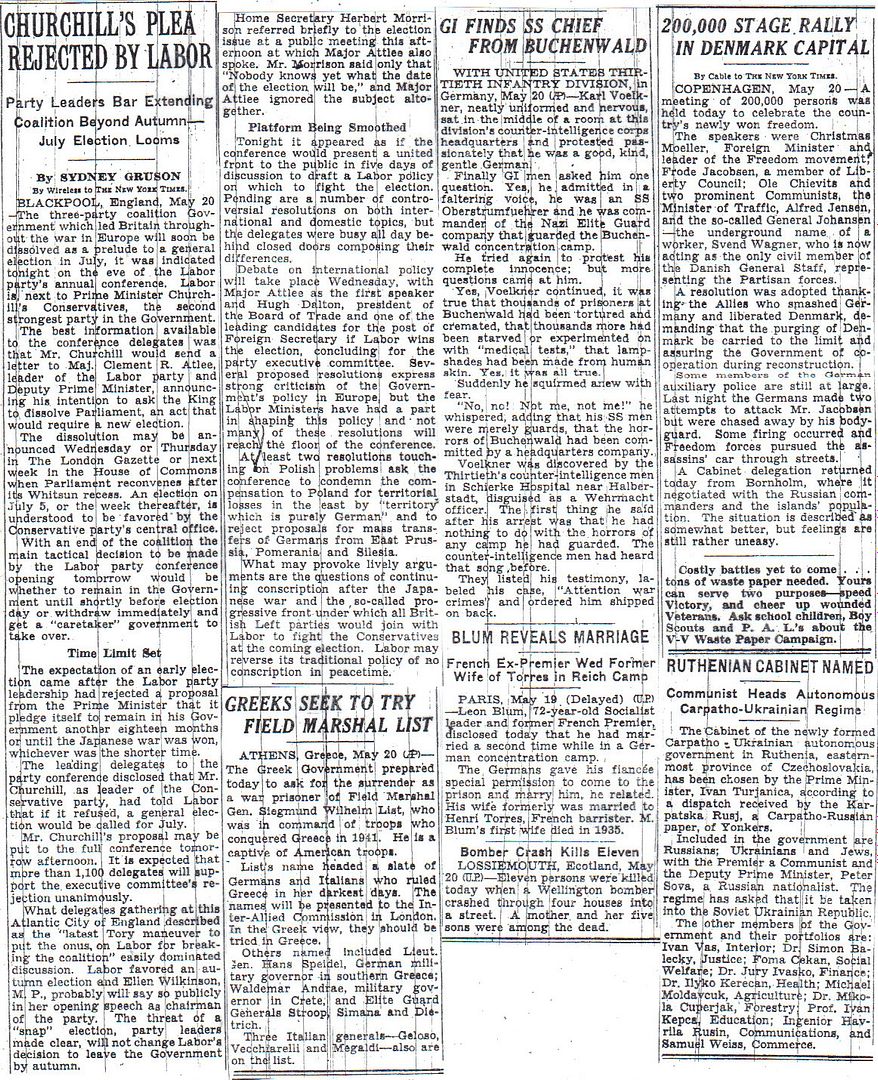
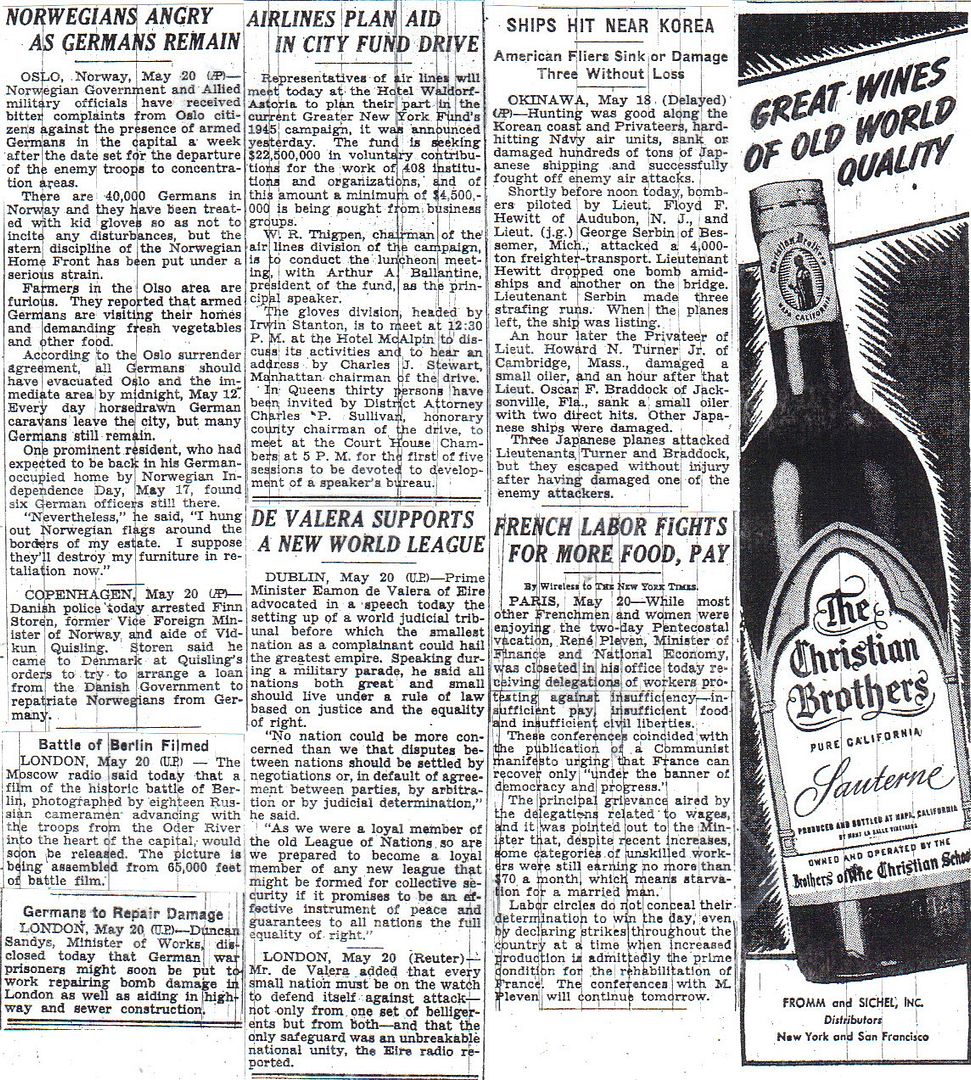
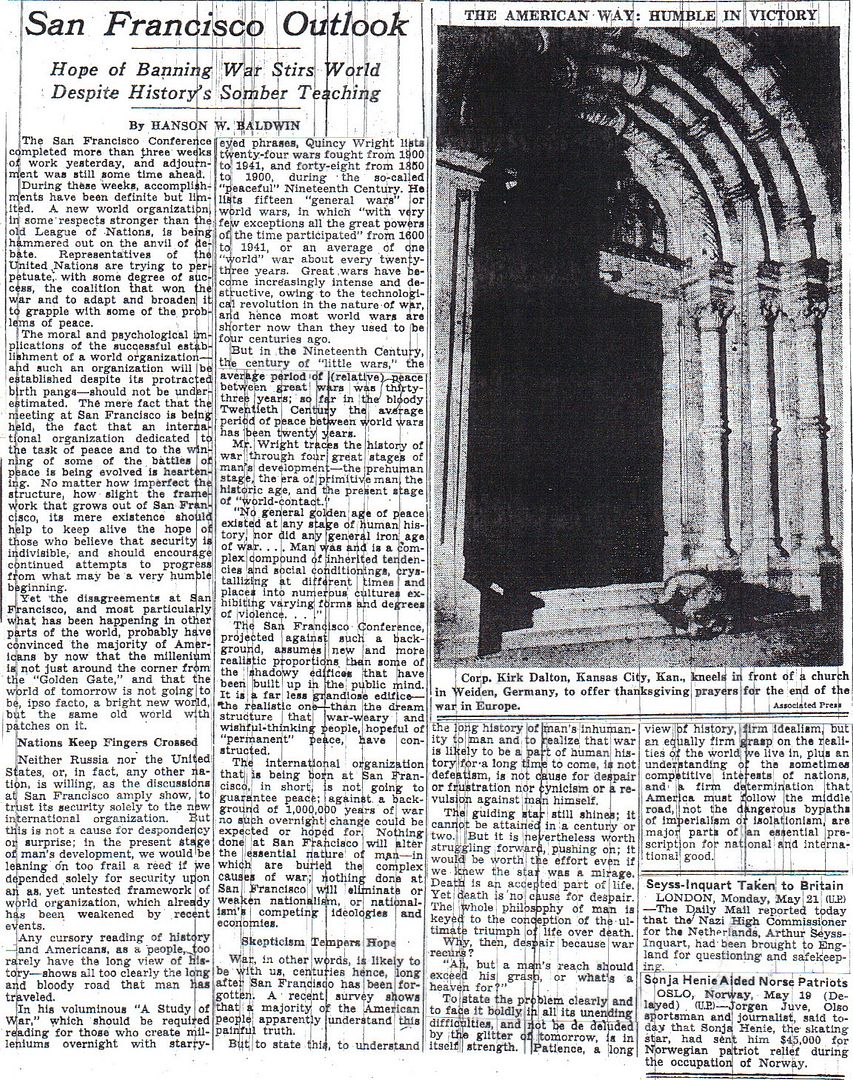
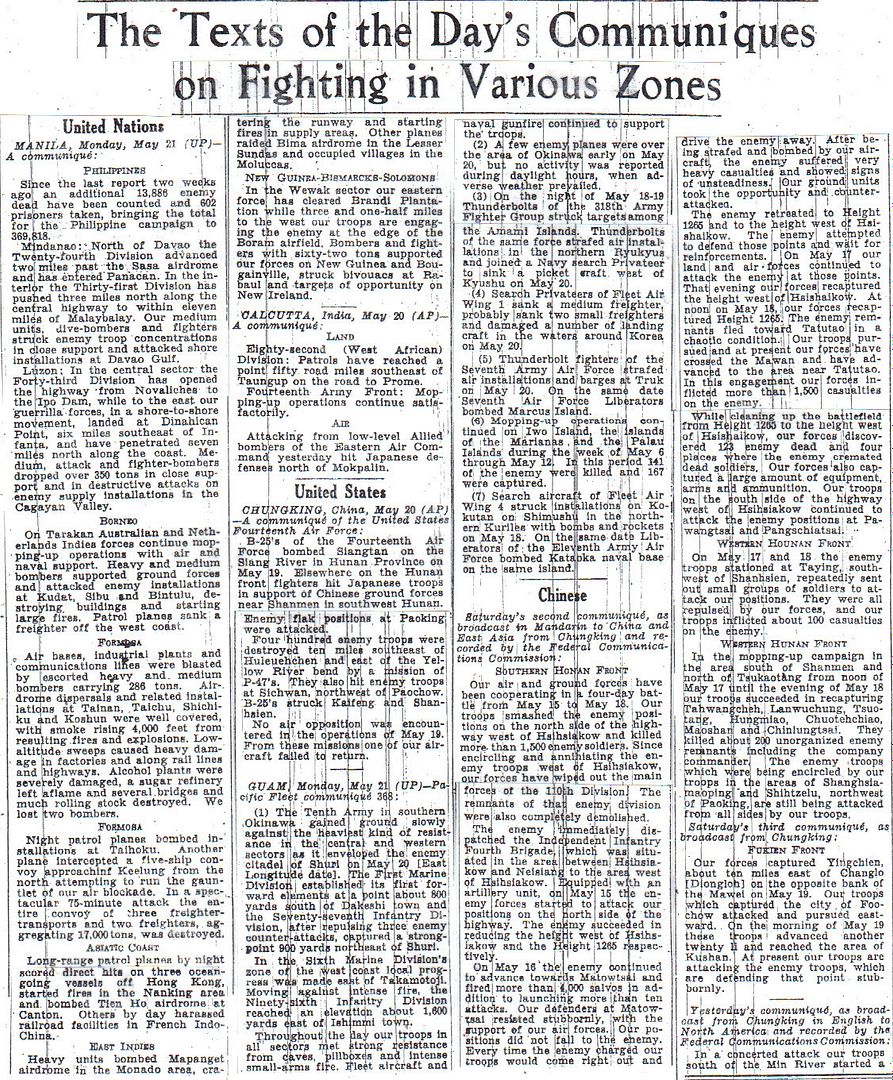
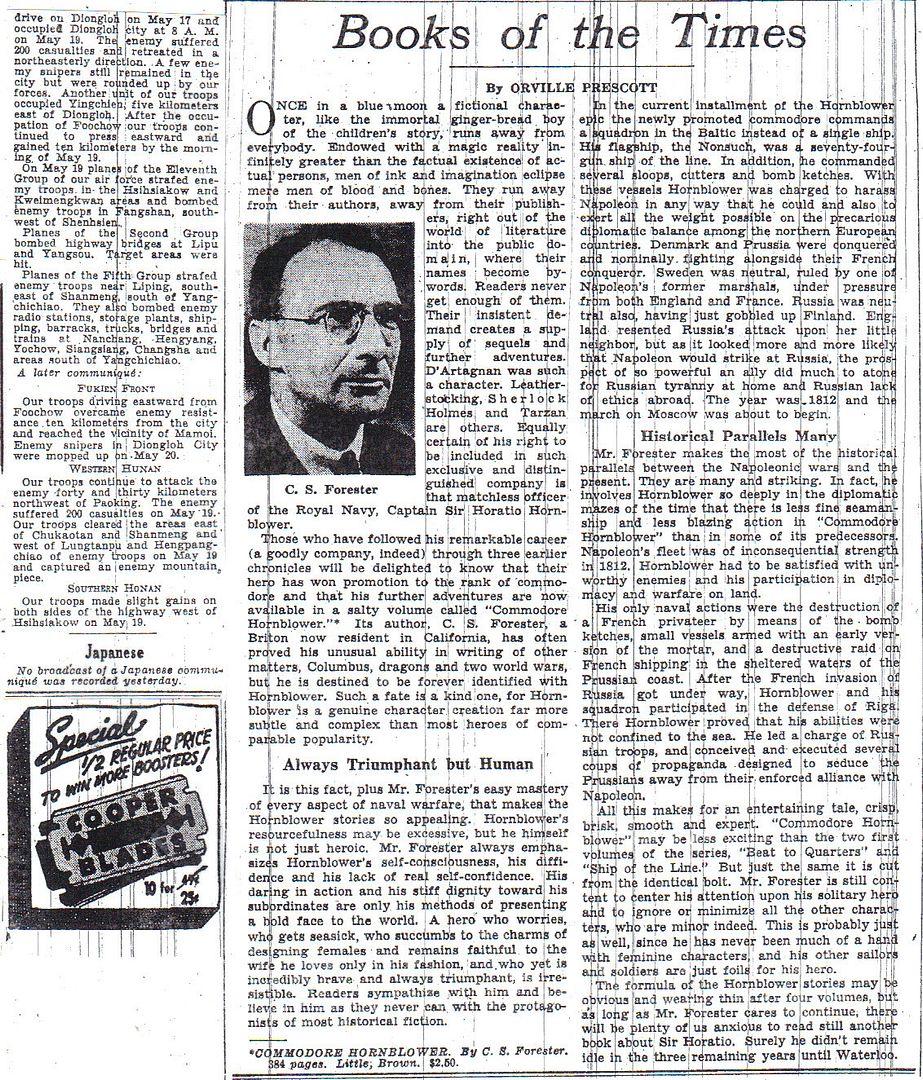
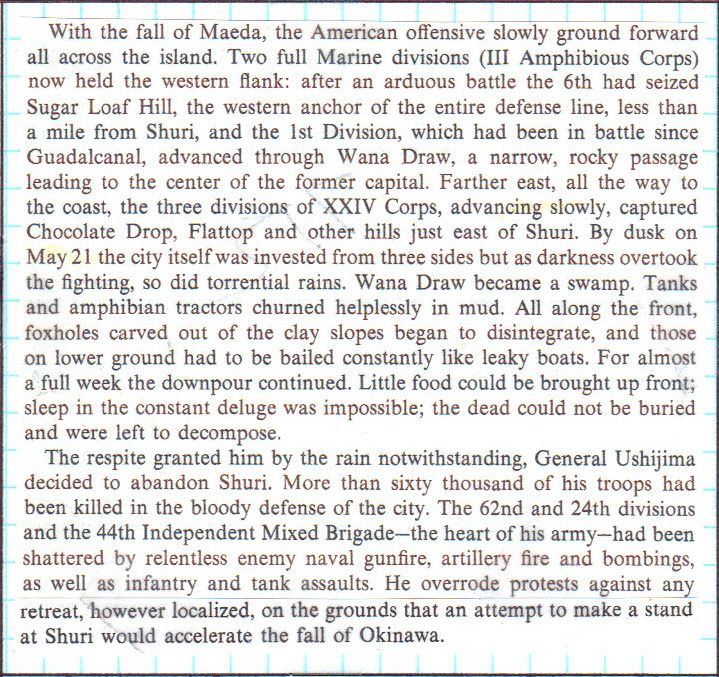
John Toland, The Rising Sun: The Decline and Fall of the Japanese Empire, 1936-1945
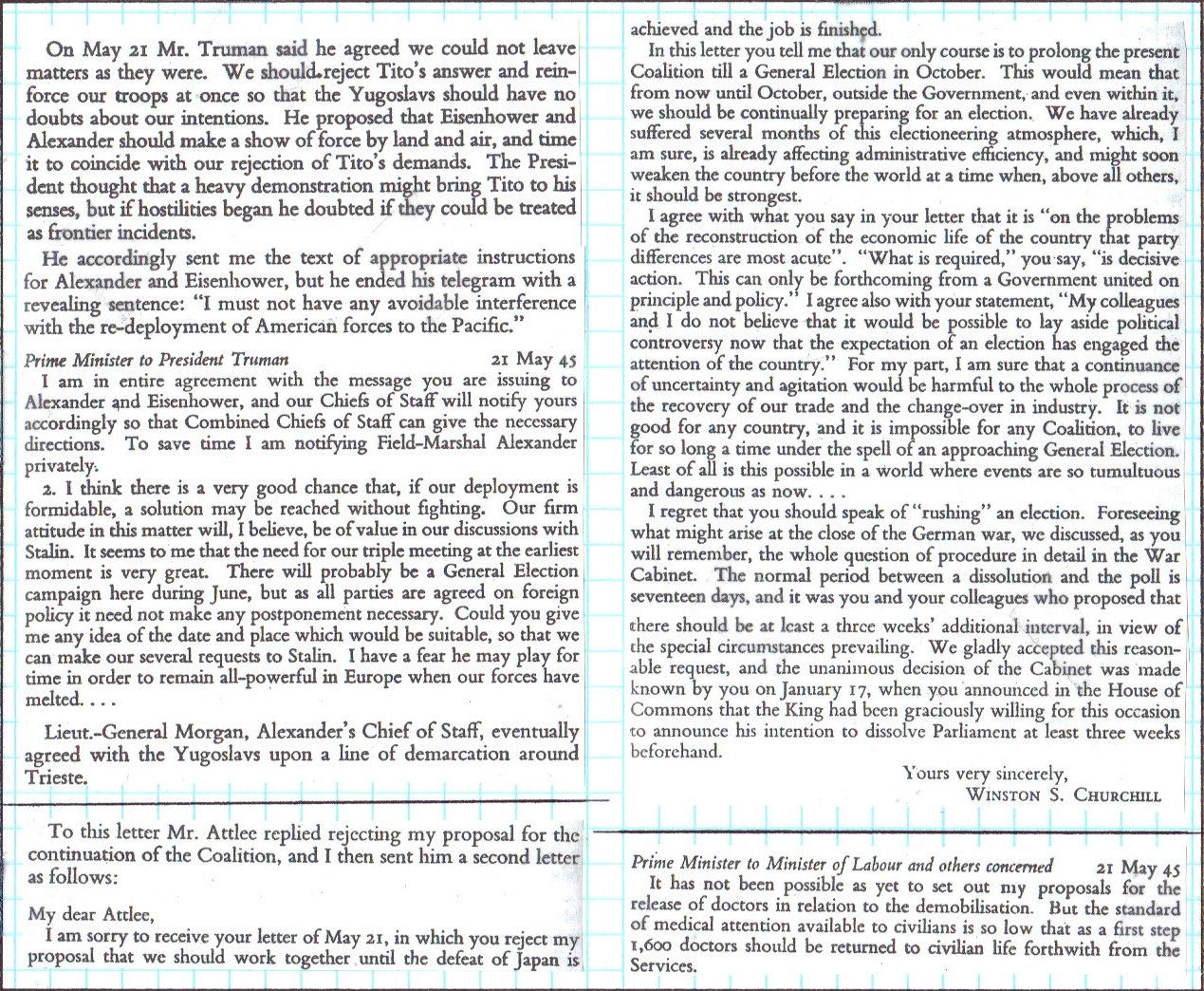
Winston S. Churchill, Triumph and Tragedy
http://www.etherit.co.uk/month/4/21.htm
May 21st, 1945 (MONDAY)
UNITED KINGDOM: Blackpool: The Labour Party votes to withdraw its support from the coalition government.
Corvette HMCS Stellarton and frigate HMCS Sea Cliff departed Londonderry to join Convoy ON-304.
HMC MTB 727 and 797 paid off.
Minesweeper HMS Michael commissioned.
GERMANY: Belsen: By order of the British, the last remaining hut of the concentration camp is burnt to the ground.
Göring is transferred from Augsburg PoW camp to the Palace Hotel at Mondorf, where he joins other senior Nazis awaiting interrogation.
SOUTH AFRICA: Frigate SAS Transvaal commissioned.
SYRIA: Damascus: Fresh violence in the Middle East seems likely in the wake of decisions today by Syria and Lebanon to break off negotiations with France. Arab nationalists are attempting to assert their claims for independence, but France has so far seemed to determined to maintain its hold on the Levant through indirect rule. In 1941, when the Free French liberated Syria and Lebanon from Vichy, they offered independence. Since then limited self-government, with France controlling defence and external affairs, has been permitted, but attempts to attain full independence have been countered by French imperial troops.
JAPAN: The US III Corps pushes hard on Okinawa. The Japanese begin to pull back from the Shuri Line.
Bonin Islands; Iwo Jima: Three United States’ serviceman are killed and eleven injured when two Japanese bombers raid the island at night. Both aircraft are shot down by flak.
U.S.A.: Destroyer USS Dyess commissioned.
Destroyer USS William C Lawe launched.
And there’s still four months to go.
they should have waited a few more months and dropped a few nukes on that island.. it would have saved thousands of American lives
Another example of “can’t imagine the N.Y. Times doing this today”: The title over the page 1 photo.
Interesting article on Japanese pilots being easy marks. This has been the case for some time already, but as usual the military has waited for an period of time to publicly admit it.
The decline in Japanese pilot skill was an inevitable result of how they went to war. When war began with the United States, Japanese pilots were highly trained and more skilled and experienced and had better planes than their American opponents. But the Japanese assumed their pilots were so good they would live forever, and didn’t factor in a prolonged war of attrition. They were short of replacement pilots and replacement aircraft, both on land and on carrier flight decks.
The Japanese attempt to create a replacement pilot program suffered from a number shortcomings. First, it was created too late, while the war was in progress, and the air groups at the front needed pilots NOW, not later. Second, because of the need to keep force levels up, they dipped into the replacement pool before the pilots had completed their training. Third, the numbers of training planes was low because the limited Japanese production had to go to the front (same issue as with pilots). Fourth, the long shipping distances for oil products from the NEI to Japan to Rabaul used up so much limited tanker space that the Japanese weren’t able to keep up stocks of aviation fuel in the home islands to train the pilots.
The result was American pilots came into battle better trained and more experienced, with better aircraft, and lived longer than their Japanese counterparts, who were getting less and less proficient.
The noticeable decline in quality began in the Solomons, where the campaign of continuous air attrition began. As their pilots were killed off, the Japanese had to scramble to replace them. At one point, for Yamamoto’s Operation “I-Go,” they emptied the carriers, and sent the pilots and planes to Rabaul to fight off the airfields there. After the planes were shot down and the pilots lost, they had carriers with no planes. That was still the situation months later when the Americans began operations in the Gilberts, Marshall and Caroline Islands. The invasions of Kwajalein and the destruction of Truk were unopposed by the IJN, because the carriers were impotent without planes and pilots.
The vicious downward cycle of pilot quality was never resolved, and by the invasion of Leyte in October 1944, the Japanese accepted their reality; any pilot going up against the Americans was on a suicide mission. So the Japanese with a rare dose of realism accepted their reality, and the kamikaze was born.


Thanks for that enlightening explanation. You know, you could do WW2 Cliff’s Notes.
If I were allowed my own personal violation of henkster’s law I would have picked up a degree in history, too. And I would be teaching history, and doing research and writing.
But then again, it’s not a violation of henkster’s law, because it does not involve henkster not being henkster.
You are teaching history and writing, and you have researched. The question, it seems to me, is whether you will continue....
Yes, they should have. But that was more of the Japanese industrial inadequacy in fighting World War 2. They failed to keep pace in production of improved weapons systems. One example is the substitution of the obsolescent Val carrier dive bomber with the high performance Judy. Production of the existing Val lagged while they brought production of the Judy on line. In the great carrier battles of 1942, the Japanese pretty much had to fight with their existing stocks of Vals.
On the larger end of this, you can look at their naval construction. They hit on a very good carrier design with the “crane sisters” Shokaku and Zuikaku. We hit on a very good carrier design with the Essex class. The Japanese only built the two crane sisters in 1941. I don’t know why they didn’t try to build more; it seems had they devoted the effort, they could have built a half-dozen more. Not that it mattered, though.
We built 24 Essex class carriers, and that was after scaling production back from the 32 we had planned.
So design wasn’t really the problem. It was production.
Ask Homer.
You’ve got no choice. Your contract here at FU runs through Sept. 3 of this year.
I think my agent was angling for a contract extension....
Disclaimer: Opinions posted on Free Republic are those of the individual posters and do not necessarily represent the opinion of Free Republic or its management. All materials posted herein are protected by copyright law and the exemption for fair use of copyrighted works.